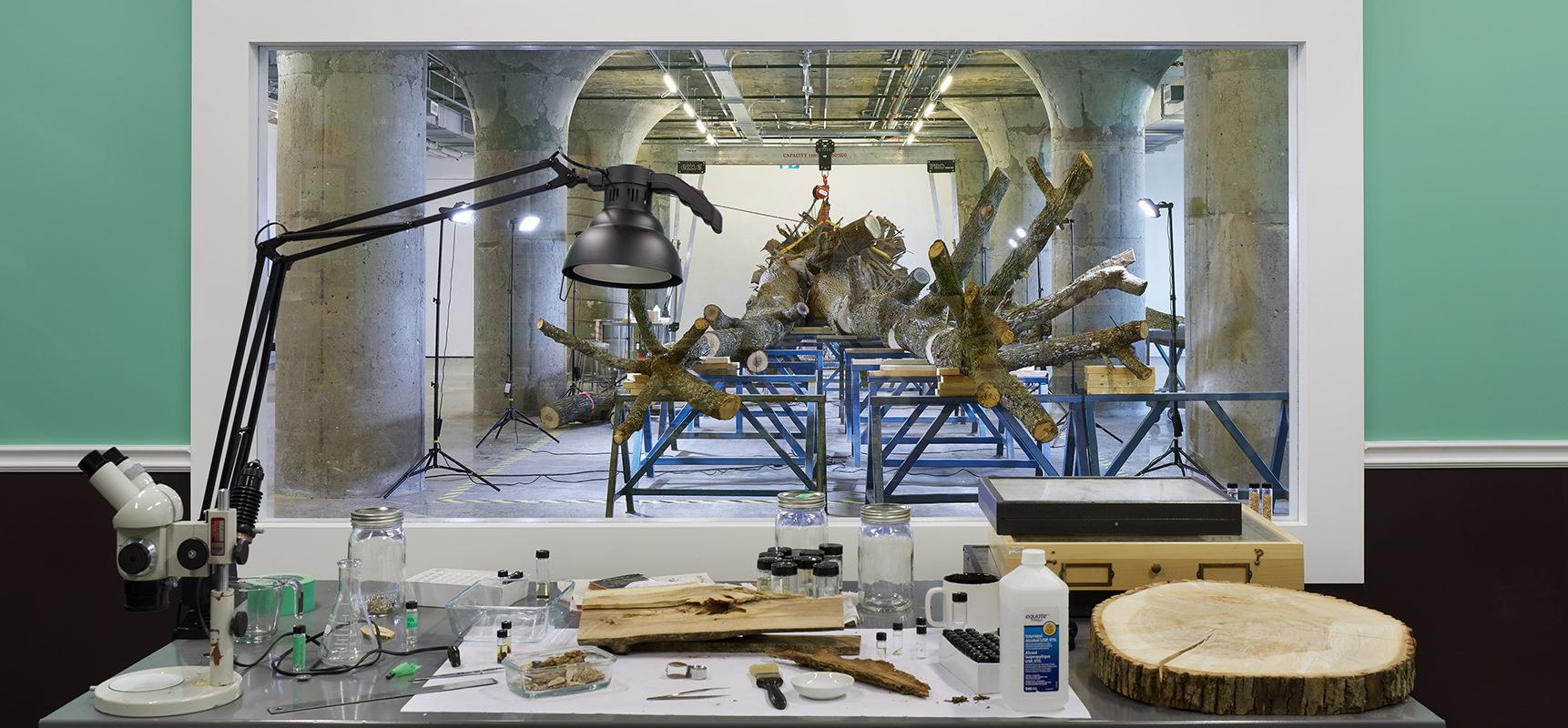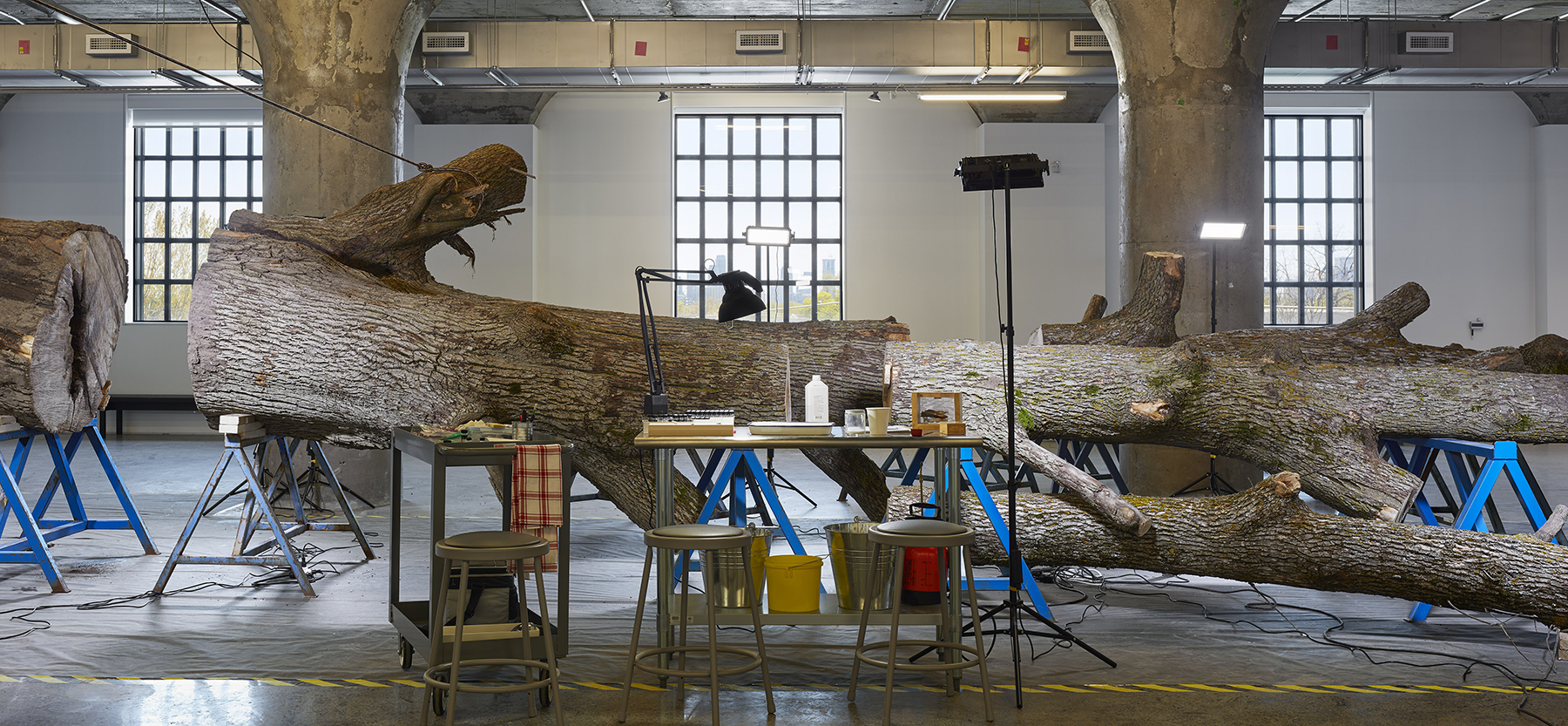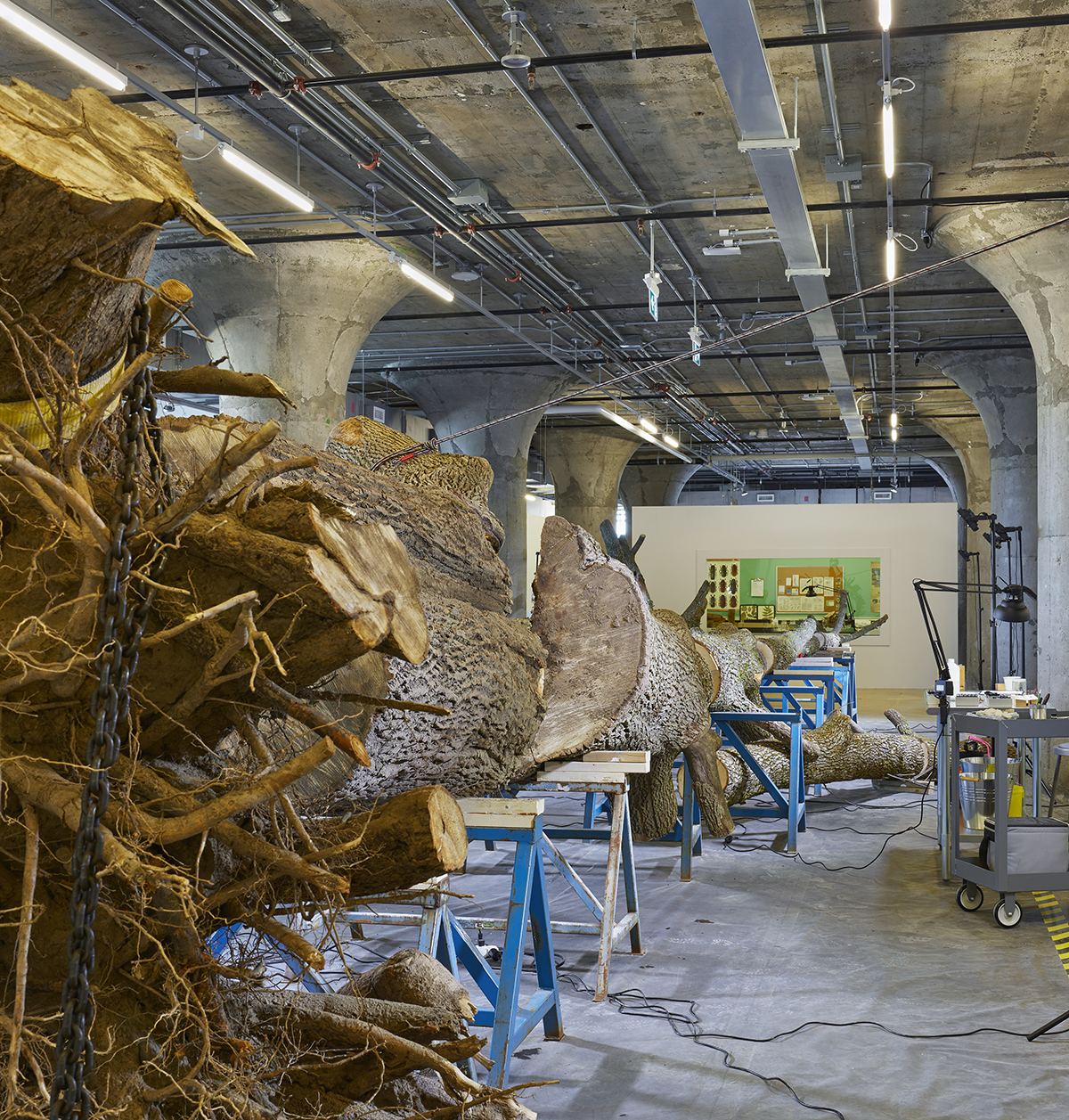
07.06.19 - Alexandra Ntoukas helps gives new life to a dead ash tree at MOCA
Every Thursday to Sunday this spring and summer, visitors to the Museum of Contemporary Art (MOCA) in Toronto will find Master of Landscape Architecture student Alexandra Ntoukas conducting research on one of its exhibits. Her work is helping give new life to a dead white ash tree, its trunk laying in sections and on display on the museum's third floor. The installation, by artist Mark Dion, draws attention to the devastation wrought by the Emerald Ash Borer, an invasive species first detected in North America in the early 2000s.
"Trees are an integral part of life on earth," says Ntoukas, who completed her Honours, Bachelor of Science with a double major in Ecology and Evolutionary Biology and Psychology at U of T before starting her MLA at the Daniels Faculty. "Not only do they provide the oxygen we breathe, but they consume carbon dioxide, provide shade, regulate temperature, absorb water, support ecosystems, support human well-being, and provide aesthetic qualities."
Entitled, The Life of a Dead Tree, the exhibition runs until July 28th. Working on behalf of MOCA and the artist in partnership with U of T's Faculty of Forestry and the Royal Ontario Museum (ROM), Ntoukas is collecting data on the various insects in the tree and the molds and fungi that are decomposing it.

"The display of the massive, 150 year-old White Ash tree on exhibit at MOCA forces one to consider the devastating impact of invasive species, like the Emerald Ash Borer, and our relationship with the world," says Ntoukas.
As Chris Hampton writes in the Toronto Star, "While a close encounter with a deceased tree may sound unexceptional, shown in this irregular context — the majestic ash extracted whole, transported inside the usually sterile white cube space and presented in exploded view — what becomes startlingly evident is just how alive a dead tree really is. There are patches of fungi and moss, a crust of blue-green lichen, spiderwebs just hours old and an assortment of arthropods, including several ant species, which have already begun colonizing the gallery floor. (Is it OK that they’re doing that?) There are so many that you can hear them. They sound like boiling water."

Ntoukas is working closely with University of Toronto Forestry Professor Sandy Smith, who teaches landscape ecology at the Daniels Faculty. Smith and Melanie Sifton, a PhD student in Forestry at U of T collaborated with MOCA to source the tree for the exhibition. The ROM provided MOCA with a KEYENCE camera for high-resolution photographs of specimens collected from the tree itself.
"While science brings critical awareness and remedies to global environmental issues, such as the introduction of invasive species, the realities of our impact exceeds the speed that it can be measured," says Ntoukas. "For my thesis, I hope to draw inspiration from this exhibition to inspire new relationships towards what we call 'nature'."
For more information on the MOCA exhibition, visit the MOCA website.

